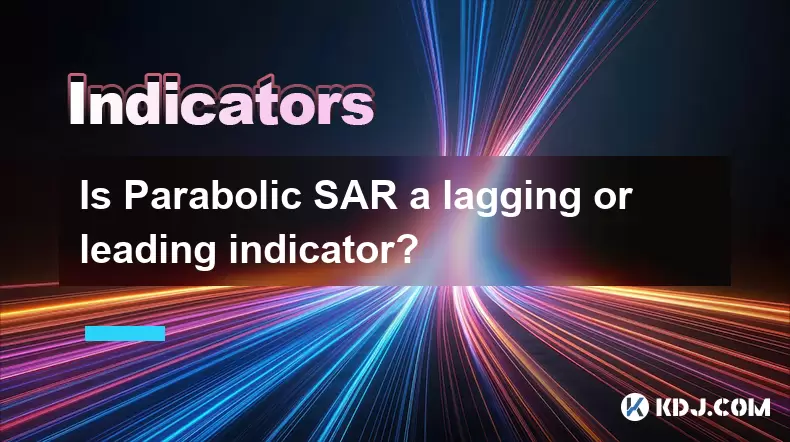-
 Bitcoin
Bitcoin $118,209.3536
1.16% -
 Ethereum
Ethereum $3,151.7546
5.98% -
 XRP
XRP $2.9277
2.35% -
 Tether USDt
Tether USDt $1.0000
0.00% -
 BNB
BNB $689.7099
1.26% -
 Solana
Solana $163.4270
1.91% -
 USDC
USDC $1.0000
0.02% -
 Dogecoin
Dogecoin $0.1983
3.74% -
 TRON
TRON $0.3008
0.51% -
 Cardano
Cardano $0.7435
2.86% -
 Hyperliquid
Hyperliquid $47.6547
-0.48% -
 Stellar
Stellar $0.4625
2.79% -
 Sui
Sui $3.9921
2.71% -
 Chainlink
Chainlink $16.0608
4.23% -
 Hedera
Hedera $0.2348
1.56% -
 Bitcoin Cash
Bitcoin Cash $496.6985
1.25% -
 Avalanche
Avalanche $21.9038
5.41% -
 UNUS SED LEO
UNUS SED LEO $8.8356
-1.88% -
 Shiba Inu
Shiba Inu $0.0...01364
5.31% -
 Toncoin
Toncoin $3.1102
4.35% -
 Litecoin
Litecoin $95.9756
3.59% -
 Polkadot
Polkadot $4.0925
5.78% -
 Monero
Monero $333.7622
-1.44% -
 Uniswap
Uniswap $9.1968
2.25% -
 Bitget Token
Bitget Token $4.6378
6.23% -
 Pepe
Pepe $0.0...01282
6.77% -
 Dai
Dai $1.0002
0.03% -
 Ethena USDe
Ethena USDe $1.0005
0.00% -
 Aave
Aave $329.9143
4.49% -
 Bittensor
Bittensor $441.4995
6.89%
Is Parabolic SAR a lagging or leading indicator?
The Parabolic SAR is a lagging indicator that helps identify trend reversals in crypto trading but works best when combined with other tools for more accurate signals.
Jul 13, 2025 at 11:21 am

Understanding the Nature of Parabolic SAR
The Parabolic SAR (Stop and Reverse) is a technical analysis indicator primarily used in trading to identify potential reversals in price movement. It was developed by J. Welles Wilder Jr., who is also known for creating other popular indicators such as the Relative Strength Index (RSI) and Average Directional Index (ADX). The indicator appears on a price chart as a series of dots either above or below the asset's price. When the dots are below the price, it indicates an uptrend; when they appear above, it signals a downtrend.
One of the key characteristics of the Parabolic SAR is its ability to dynamically adjust based on price momentum. This dynamic adjustment often raises questions about whether the indicator is lagging or leading in nature. Understanding this distinction is crucial for traders who rely on timing entries and exits in fast-moving markets like cryptocurrency.
What Defines Lagging and Leading Indicators?
To determine whether Parabolic SAR falls into the lagging or leading category, it’s essential to understand what defines these two types of indicators:
- A lagging indicator uses past price data to generate signals. These indicators confirm trends after they have already begun and are generally more reliable in trending markets but may produce delayed signals.
- A leading indicator, on the other hand, attempts to predict future price movements before they occur. These are often used in ranging or sideways markets and can provide early entry opportunities, though they come with higher false signal risks.
Most technical indicators fall into one of these categories. For example, moving averages are classic lagging indicators, while oscillators like RSI or Stochastic are considered leading indicators because they attempt to forecast turning points.
Why Parabolic SAR Is Considered a Lagging Indicator
Despite its dynamic adjustments, the Parabolic SAR is fundamentally a lagging indicator. This classification arises from the fact that it relies entirely on historical price data to calculate its values. The SAR formula incorporates previous highs and lows, along with an acceleration factor, which means it cannot anticipate price changes before they happen.
In practice, the indicator follows the price rather than predicting where the price might go next. This results in signals being generated after a reversal has already occurred. In highly volatile crypto markets, where sudden swings are common, this delay can sometimes cause traders to enter or exit positions slightly late, missing optimal levels.
When Parabolic SAR Behaves Like a Leading Indicator
Although classified as a lagging indicator, there are scenarios where the Parabolic SAR appears to act like a leading indicator. This perception stems from its unique feature of anticipating reversals by plotting potential reversal points ahead of the current price.
For instance, during strong trends, the SAR accelerates and moves closer to the price, potentially signaling an imminent reversal even before the trend visibly weakens. In some cases, especially during sharp pullbacks or quick corrections in cryptocurrencies, the SAR flips sides earlier than other traditional lagging tools like moving averages.
However, this behavior should not be mistaken for true predictive power. Instead, it reflects how the calculation mechanism reacts to recent price acceleration, not foresight into future market conditions.
How Traders Can Use Parabolic SAR Effectively in Crypto Markets
Given its hybrid behavior, traders must approach the Parabolic SAR with caution in cryptocurrency trading. Here’s a detailed guide on how to use it effectively:
- Combine with Other Indicators: Since Parabolic SAR works best in trending environments, pairing it with volume indicators or moving averages can help filter out false signals.
- Use on Higher Timeframes: On lower timeframes like 5-minute or 15-minute charts, the SAR tends to flip frequently, generating many false reversals. Using it on hourly or daily charts provides more reliable signals.
- Adjust the Acceleration Factor: By default, the SAR uses an acceleration factor starting at 0.02 and increasing by 0.02 until it reaches 0.2. Some traders tweak these settings to reduce sensitivity in highly volatile crypto assets.
- Filter Signals with Candlestick Patterns: Confirming SAR reversals with candlestick patterns such as engulfing bars or dojis can improve trade accuracy.
- Set Stop Losses Based on SAR Dots: Many traders place stop losses just beyond the SAR dot to manage risk dynamically as the trend progresses.
Common Misconceptions About Parabolic SAR in Crypto Trading
There are several misconceptions surrounding the use of Parabolic SAR in cryptocurrency trading:
- Some believe it can reliably predict tops and bottoms in volatile markets. However, due to its lagging nature, it often confirms reversals only after significant moves have already happened.
- Others think it performs equally well in all market conditions. In reality, it struggles during consolidation phases and produces many whipsaws.
- There’s also a belief that the SAR should be used alone for trade decisions. Experienced traders know that no single indicator is foolproof, especially in unpredictable crypto markets.
By understanding these nuances, traders can better integrate the Parabolic SAR into their strategies without over-relying on its signals.
Frequently Asked Questions
Q: Can Parabolic SAR be used in conjunction with Fibonacci retracement levels?
Yes, combining Parabolic SAR with Fibonacci retracement levels can enhance decision-making. For instance, if the SAR flips direction near a key Fibonacci level (like 61.8%), it could strengthen the reversal signal. However, always cross-check with volume and candlestick patterns for confirmation.
Q: Does Parabolic SAR work better with specific cryptocurrencies?
The performance of Parabolic SAR can vary depending on the volatility and liquidity of the cryptocurrency. It tends to perform better with major coins like Bitcoin or Ethereum, which exhibit clearer trends, compared to smaller altcoins that experience erratic price action.
Q: How does the acceleration factor affect Parabolic SAR’s responsiveness?
Increasing the acceleration factor makes the Parabolic SAR more sensitive to price changes, causing it to flip more frequently. Conversely, lowering the acceleration factor reduces sensitivity, making it suitable for filtering noise in choppy markets.
Q: Should I use Parabolic SAR for scalping in crypto markets?
Due to its tendency to flip frequently and lag behind real-time price action, Parabolic SAR is generally not recommended for scalping. Scalpers usually prefer faster-reacting indicators like the EMA crossover or Volume Profile for precise short-term entries and exits.
Disclaimer:info@kdj.com
The information provided is not trading advice. kdj.com does not assume any responsibility for any investments made based on the information provided in this article. Cryptocurrencies are highly volatile and it is highly recommended that you invest with caution after thorough research!
If you believe that the content used on this website infringes your copyright, please contact us immediately (info@kdj.com) and we will delete it promptly.
- Bitcoin's Bullish Run: Demand Surges, Correction Unlikely?
- 2025-07-16 12:30:12
- MetYa, Conflux Network, and SocialFi: Building the Future of Web3
- 2025-07-16 12:30:12
- Cantor Fitzgerald, Bitcoin, and SPAC Acquisitions: A New York Perspective
- 2025-07-16 10:30:12
- PoL v2 and BeraChain: Building a Stronger Blockchain Ecosystem
- 2025-07-16 10:30:12
- Bitcoin, Social Media, and FOMO: A New Yorker's Take on the Crypto Craze
- 2025-07-16 10:50:12
- GameStop, Bitcoin, and the Inflation Hedge: A New York Perspective
- 2025-07-16 08:30:12
Related knowledge

Advanced RSI strategies for crypto
Jul 13,2025 at 11:01am
Understanding the Basics of RSI in Cryptocurrency TradingThe Relative Strength Index (RSI) is a momentum oscillator used to measure the speed and chan...

Crypto RSI for day trading
Jul 12,2025 at 11:14am
Understanding RSI in the Context of Cryptocurrency TradingThe Relative Strength Index (RSI) is a momentum oscillator used to measure the speed and cha...

Crypto RSI for scalping
Jul 12,2025 at 11:00pm
Understanding RSI in the Context of Crypto TradingThe Relative Strength Index (RSI) is a momentum oscillator widely used by traders to measure the spe...

What does an RSI of 30 mean in crypto
Jul 15,2025 at 07:07pm
Understanding RSI in Cryptocurrency TradingRelative Strength Index (RSI) is a momentum oscillator widely used in cryptocurrency trading to measure the...

What does an RSI of 70 mean in crypto
Jul 13,2025 at 06:07pm
Understanding the RSI Indicator in Cryptocurrency TradingThe Relative Strength Index (RSI) is a widely used technical analysis tool that helps traders...

Does RSI work in a bear market for crypto
Jul 16,2025 at 01:36pm
Understanding RSI in Cryptocurrency TradingThe Relative Strength Index (RSI) is a momentum oscillator used by traders to measure the speed and change ...

Advanced RSI strategies for crypto
Jul 13,2025 at 11:01am
Understanding the Basics of RSI in Cryptocurrency TradingThe Relative Strength Index (RSI) is a momentum oscillator used to measure the speed and chan...

Crypto RSI for day trading
Jul 12,2025 at 11:14am
Understanding RSI in the Context of Cryptocurrency TradingThe Relative Strength Index (RSI) is a momentum oscillator used to measure the speed and cha...

Crypto RSI for scalping
Jul 12,2025 at 11:00pm
Understanding RSI in the Context of Crypto TradingThe Relative Strength Index (RSI) is a momentum oscillator widely used by traders to measure the spe...

What does an RSI of 30 mean in crypto
Jul 15,2025 at 07:07pm
Understanding RSI in Cryptocurrency TradingRelative Strength Index (RSI) is a momentum oscillator widely used in cryptocurrency trading to measure the...

What does an RSI of 70 mean in crypto
Jul 13,2025 at 06:07pm
Understanding the RSI Indicator in Cryptocurrency TradingThe Relative Strength Index (RSI) is a widely used technical analysis tool that helps traders...

Does RSI work in a bear market for crypto
Jul 16,2025 at 01:36pm
Understanding RSI in Cryptocurrency TradingThe Relative Strength Index (RSI) is a momentum oscillator used by traders to measure the speed and change ...
See all articles

























































































